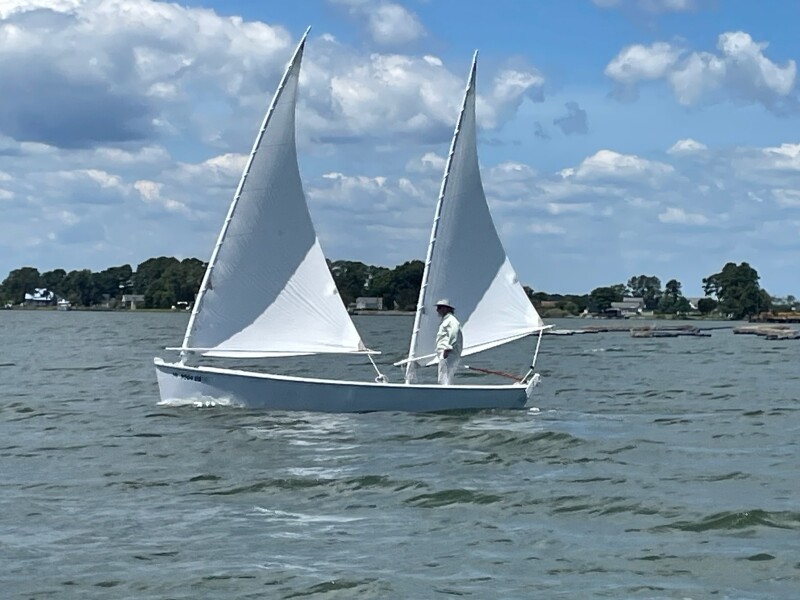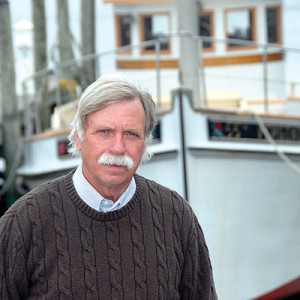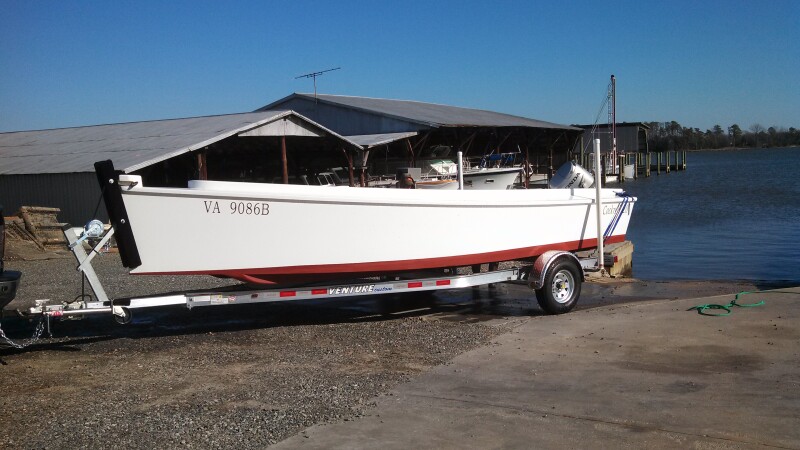The importance of small commercial fishing skiffs in the history of commercial fishing in the United States should never be underestimated. Throughout the country's coastal areas, different styles of skiffs evolved to navigate local water conditions where seafood was harvested close to shore.
Some boatbuilders in the Chesapeake Bay region are using PVC to build new boats based on those traditional designs. The use of PVC versus wood also appears to be helping to extend the life of some of the bay’s older wooden commercial fishing boats.
Boatbuilder Eric Hedberg of Rionholdt Once and Future Boats in Gwynn's Island, Va. recently got an order to build a 14’ two-mast sharpie out of PVC materials. The buyer, from Manteo, N.C., had ancestors who had worked a sharpie in the Carolina sounds pound net fishery.
“He had researched the history of the boat and then I got into researching the sharpie and found out what a great and important style boat it was in our maritime history,” said Hedberg. “The style was used from Maine to the Florida Keys, and a 30’-long sharpie could carry 150 bushels of oysters.”
The sail-powered sharpie was a hard-chined, flat bottom, shallow draft vessel, with a centerboard and some flare in the sides. The style spread up and down the Atlantic coast in the 19th century, according to the noted maritime historian Howard I. Chapelle.
“This type of boat was particularly well suited to oyster fishing, and during the last four decades of the 19th century, its use spread along the Atlantic coast of North America as new oyster fisheries and markets opened,” wrote Chapelle from The Project Gutenberg EBook, “The Migrations of an American Boat Type” (July 2009). “These craft were built to be used in the then-important New Haven oyster fishery that was carried on for the most part, by hand-tonging.”
Chapelle wrote that the sharpie was so distinctive in form, proportion, and appearance that her movements from area to area can be traced with confidence. “The refinement that appeared and that distinguished the sharpie from other flat-bottom skiffs first appeared in some boats that were built at New Haven, Connecticut, in the late 1840s.”

materials. Photo courtesy Eric Hedberg.
PVC and Chesapeake Bay boats
Hedberg was one of the first on the Chesapeake Bay to experiment with PVC as a boatbuilding material. He says that a boat built with PVC "looks like a wood boat, acts like a wood boat and feels like a wood boat and it has that great ride of a wood boat, but it won't rot, won't absorb water and doesn't have the shrink and swell problems that wood boats do.”
"I'm building and restoring boats out of cellular PVC and modern adhesives that I fully expect to last indefinitely and with a minimum amount of care. The rate of destruction truly is negligible," says Hedberg.
He also builds 20-foot deadrise skiffs out of PVC, similar to the design of the late wooden boatbuilder Lewis Wright of Deltaville, Va. The skiffs can carry up to 70 hp outboards and are used by commercial
oystermen and crabbers.
Another boatbuilder using PVC is Myles Cockrell of Cockrell’s Marine Railway and Little Wicomico Oyster Company LLC of Heathsville, Va. He builds 20’ x 8’ flat-bottom skiffs out of PVC sheets.
The use of PVC in place of wood for boat repair is becoming more common in the Bay region, too. Hedberg recently used PVC to replace the coamings on the buy boat Peggy.
Boatbuilder Richard Green of Gloucester, Va., used PVC elements in the restoration of the Mobjack, a 75-foot deck boat currently being used in the James and York Rivers oyster fisheries.







